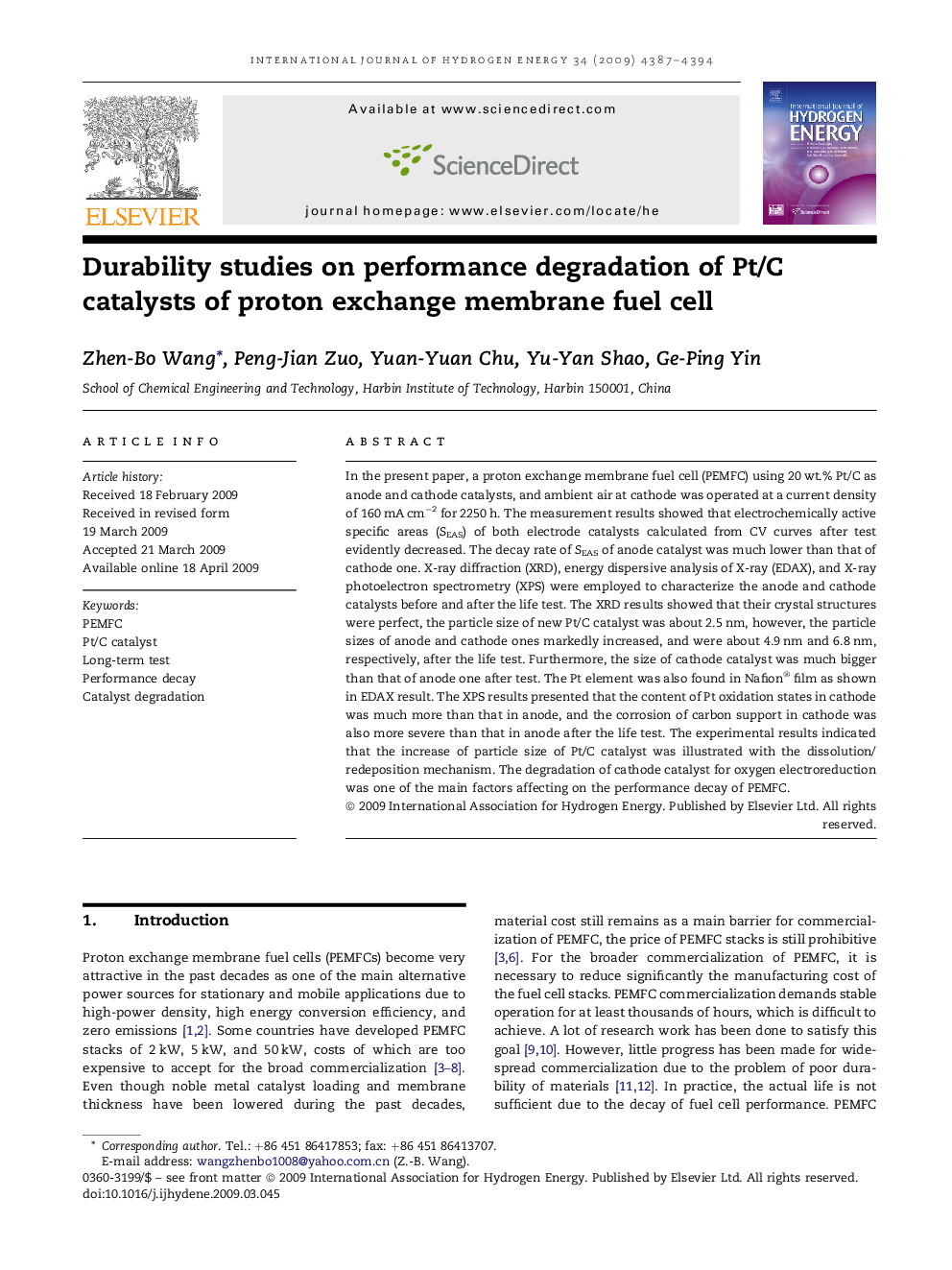| Article ID | Journal | Published Year | Pages | File Type |
|---|---|---|---|---|
| 1273848 | International Journal of Hydrogen Energy | 2009 | 8 Pages |
In the present paper, a proton exchange membrane fuel cell (PEMFC) using 20 wt.% Pt/C as anode and cathode catalysts, and ambient air at cathode was operated at a current density of 160 mA cm−2 for 2250 h. The measurement results showed that electrochemically active specific areas (SEAS) of both electrode catalysts calculated from CV curves after test evidently decreased. The decay rate of SEAS of anode catalyst was much lower than that of cathode one. X-ray diffraction (XRD), energy dispersive analysis of X-ray (EDAX), and X-ray photoelectron spectrometry (XPS) were employed to characterize the anode and cathode catalysts before and after the life test. The XRD results showed that their crystal structures were perfect, the particle size of new Pt/C catalyst was about 2.5 nm, however, the particle sizes of anode and cathode ones markedly increased, and were about 4.9 nm and 6.8 nm, respectively, after the life test. Furthermore, the size of cathode catalyst was much bigger than that of anode one after test. The Pt element was also found in Nafion® film as shown in EDAX result. The XPS results presented that the content of Pt oxidation states in cathode was much more than that in anode, and the corrosion of carbon support in cathode was also more severe than that in anode after the life test. The experimental results indicated that the increase of particle size of Pt/C catalyst was illustrated with the dissolution/redeposition mechanism. The degradation of cathode catalyst for oxygen electroreduction was one of the main factors affecting on the performance decay of PEMFC.
